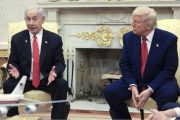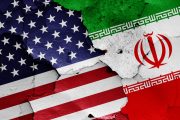
Americans might think we are spending a lot of money on our own Pentagon, with its annual budget of more than half a trillion dollars a year, covering defense installations and service personnel at home as well as a vast array of worldwide military operations. But we are also building a brand new “Pentagon,” or military headquarters, for Afghanistan for a mere $92 million. The five-story, 516,000 square-foot building now under construction features domed roofs and a high-tech basement to link Aghan generals at the headquarters with their troops fighting the Taliban across the country, according to a Washington Post report. But the Kabul “Pentagon,” while a high-profile symbol of continued American commitment to the nation we invaded after the terrorist attacks of September 11. 2001, is but one item on what the Post described as “a $10 billion menu of construction projects aimed at bolstering Afghanistan’s security forces.” A total of 1,150 buildings have been planned, with more than 600 already completed at a cost of $4 billion, the Post reported. Ongoing projects include a $54 million Kabul headquarters for the Interior Ministry, which oversees the Afghan police, and a $102 million base for the Afghan military’s 201st Corps in the eastern part of the country.
The U.S. building program continues even as American and NATO forces begin a withdrawal of troops scheduled to be completed by 2014. The withdrawal of U.S troops from Iraq at the end of last year has not stopped the flow of American dollars into that country, either. “Troops Have Withdrawn from Iraq, but U.S. Money Hasn’t” was the headline over a Walter Pincus “Fine Print” column in the Washington Post last week. A pre-solicitation notice published on June 14 put the construction cost of a planned upgrade of the vast U.S. embassy in Baghdad at $60 to $80 million, wrote Pincus, who reported the State Department is planning to spend “up to $115 million” on the project, which is expected to take two years to complete. American diplomats and staff moved into the new $700 million embassy, set on 104 acres, just 3 1/2 years ago. Upgrades to the facility, said to be the world’s largest embassy, will include a central utility power plant, an underground fuel storage facility holding a 21-day supply, and improvements to a compound-wide fire and water distribution, the domestic water system, the sanitary sewer system, the storm water system and the telecommunications system.
The United State has already spent more than $100 million on a new Police College facility in Iraq that includes living quarters, a dining facility, office building, gymnasium, and helicopter landing site, Pincus reported. The facility is to be turned over to the Iraqis at the end of this year. A news release from the embassy heralded the June 17 grand opening of the $15 million Al-Nahrain Center for Strategic Studies, “with funding from the U.S. embassy.” Iraqi Prime Minister Nuri al-Maliki described the facility as “an important step in the process of state building,” but did not mention the U.s. funding, according to the National Iraqi News Agency.
U.S. officials drew the line on further spending on the Afghanistan “Pentagon” project when Defense Minister Abdul Rahim Wardak asked for a bigger office in the building at an estimated cost of $300,000. Wardak wanted more room for his staff of “100 or something,” he told the Post. “They wanted all of them to be crowded near my office,” he said. “I didn’t want them close.” But Colonel Andrew Backus, director of engineering for the NATO command in charge of training and equipping Afghanistan security forces, said changes in construction plans are being resisted to save both time and money. “We are taking a firm stance with a set of disciplined business rules on change control,” Backus told the Post. “That’s our approach.”
Still, the number and costs of these projects might be expected to raise some eyebrows and even tempers in the United States at a time when the our nation’s economy is stagnant, millions are out of work and annual deficits exceeding $1 trillion have driven the national debt beyond $15.7 trillion. The U.S. practice of forming alliances with and providing military training and equipment to other nations became commonplace in the post-World War II era, when it became accepted as a form of “collective security.” But building a police college, a center of strategic studies, and offices and headquarters for the military and interior ministries of other nations appears to be a far cry from providing for the “common defense” of the United States, as called for in our Constitution. Prime Minister Mailiki’s statement about the U.S.-funded Al-Nahrain Center being “an important step in the process of state building” shows how much has changed since George W. Bush, when campaigning for President in 2000, spoke often of his opposition to “nation building” in other lands. The U.S. became waist deep in nation building under Bush following the invasions of both Afghanistan and Iraq and the building continues under President Obama.
And despite the “firm stance” for “disciplined business rules” described by Colonel Backus, U.S. taxpayers appear to be furnishing the Afghanistan defense minister with more luxury than he wanted. “I’m not somebody to be very luxurious or something like that,” Warduk told an interviewer as he gestured toward a stately leather chair behind his desk. ” I have never sat on that chair.”
“Once it’s finished, it will be a permanent and a very significant illustration of the U.S. support for Afghanistan,” the defense minister said of what will soon be his new headquarters. Illustrations are becoming more expensive.
Photo: Afghan Defense Minister Abdul Rahim Wardak speaks during a joint press conference with Defense Secretary Leon Panetta in Kabul, Afghanistan, June 7, 2012: AP Images




